Simplifying
Shoulder Surgery
SINEFIX™ is a novel approach to shoulder surgery to fix rotator cuff tears up to 2 cm. It addresses current problems in treatment in order to improve outcomes for patients and reduce complexity for surgeons.
The implant consists of a base plate with teeth on the underside and two conically shaped attachment anchors with barbs. The implant is made of medical grade PEEK (polyetheretherketone) known for its biocompatibility, biostability and chemical stability.
For more information view the SINEFIX guide.
FDA Cleared

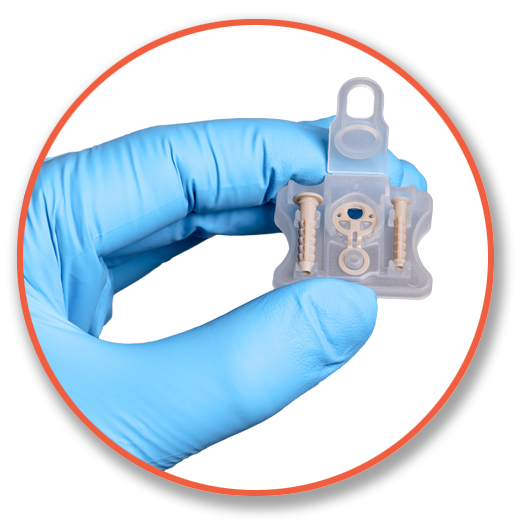
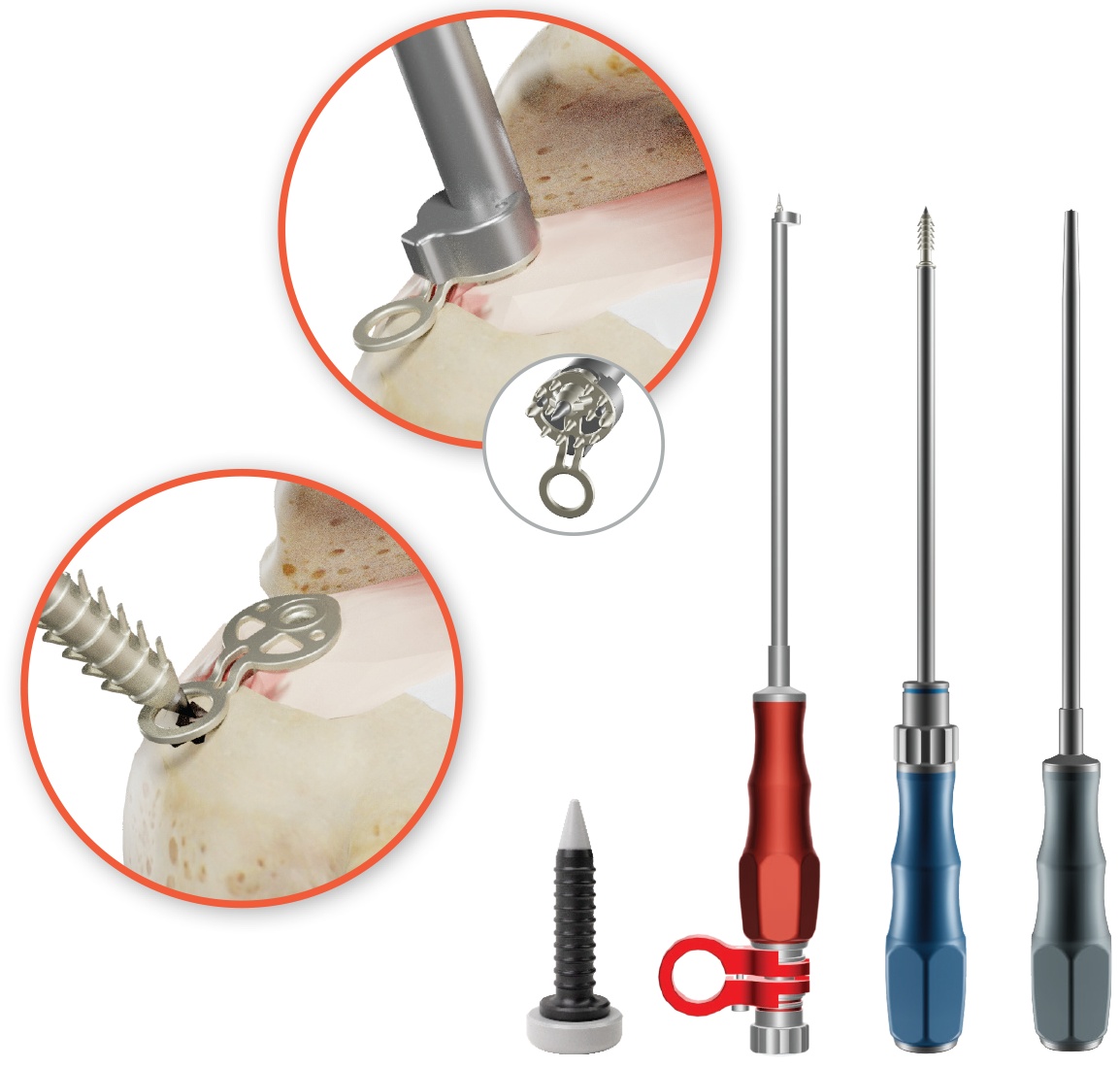
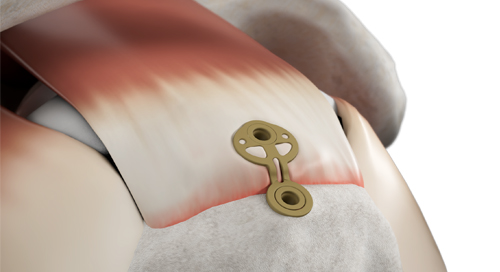
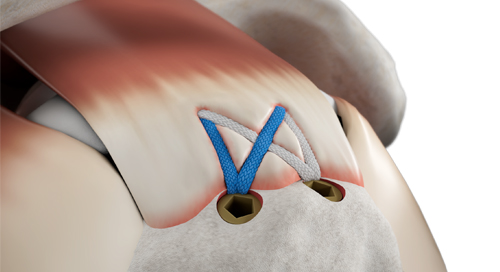
Simple Shoulder Surgery Technique for Rotator Cuff Repair
- Implant can be attached in two steps firmly connecting the tendon to the humerus over a large area
- Minimal instrumentation required, plus no suture management or knot tying steps
- No reduction or mobilization of tissue needed for partial thickness tears
Improved Tendon to Bone Fixation
- Higher pull-out forces than double row fixation using less implants
- Minimizes punctual pressure aiming to reduce risk of loosening post surgery
- Demonstrates less gap formation than double row fixation to optimize contact pressure
Ensuring blood flow and facilitating healing
- Even pressure load over the tendon ensuring good blood circulation
- Permanent and secure repair with no punctual pressure points
- Instrumentation designed to limit depth of medial anchor to prevent excessive compression of tendon
BIOMECHANICAL EVALUATION
In a direct comparison, the new SINEFIX implant had higher pull-out forces and less gap formation than a double-row repair (DDR). 10 fresh sheep infraspinatus tendons were refixed with SINEFIX and DRR (2x medial and 1x lateral all-suture anchor) respectively.
Methodology: after preloading with 10 N, the tendons were cyclically loaded with 10 to 62 N over 200 cycles at 0.2 Hz. The tendons, which were then still refixed, were loaded until they ruptured. View the poster.
Gap Formation:
Gap formation under cyclic loading up to 62 N
All (n=10) tendons refixed with SINEFIX survived cyclic loading up to 62N with a gap formation up to 1.49 millimeter (SD 0.84). In contrast, with the DRR method, one tendon remained less stable (n=9) with a gap formation of 3.19 millimeters (SD 0.91) (p=0.001).
Pullout Strength:
Pullout forces
The maximum pullout forces with SINEFIX (n=6) were 215N (SD 55) versus DRR (n=4) with 166N (SD 15) (p=0.084).
Designed to address challenges with rotator cuff repair surgery
Learn more about SINEFIX and the three main challenges with rotator cuff repair surgery it addresses.

